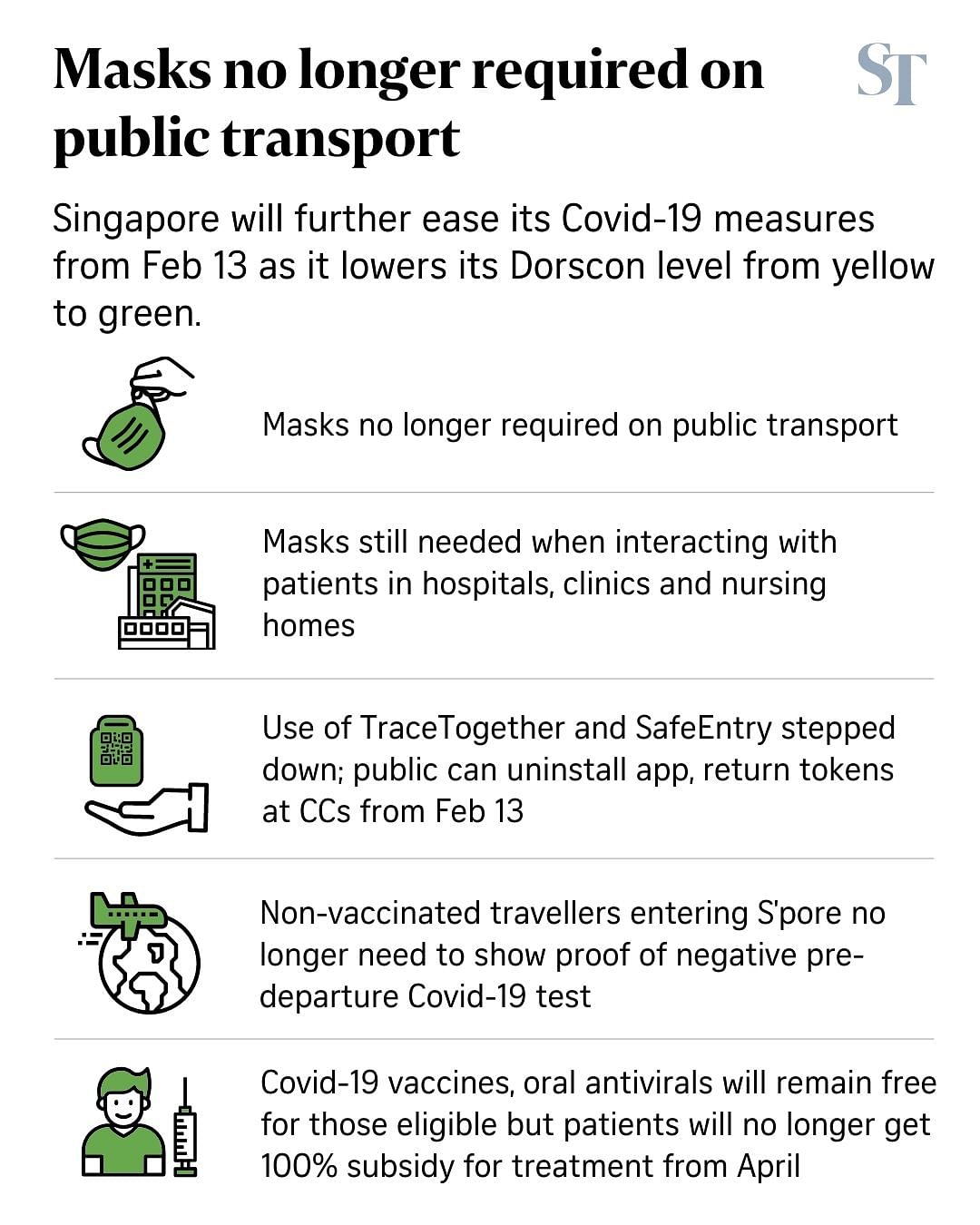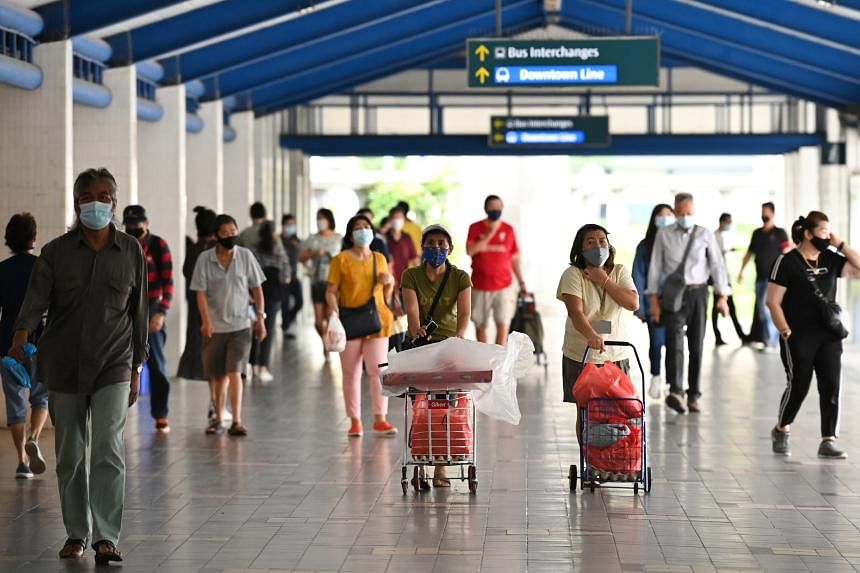SINGAPORE – Singapore is going green again, after more than three years of living with heightened health alerts over Covid-19 through the national disease response system.
Under the disease outbreak response system condition (Dorscon) set up in 2005, green indicates that a disease is mild and poses minimal disruption to daily life.
Any colour above green sets in motion actions to be taken by the Government and the healthcare system – as well as the public – and indicates increasing severity and spread of a disease outbreak.
From next Monday, Singapore reverts to the lowest status of green from yellow, which is the next level of severity.
The higher levels are orange, and then red, which is activated only if the country is facing an out-of-control pandemic.
Dorscon was established following the severe acute respiratory syndrome epidemic in 2003 and avian flu situation in 2004.
With the Covid-19 pandemic, Singapore raised the alert level to Dorscon yellow on Jan 21, 2020, two days before the first case was even detected here.
Yellow indicates there is mild infection spreading locally, or severe infection elsewhere that the country needs to guard against. Precautions under yellow include measures at borders and healthcare institutes.
Singapore did not remain at yellow for long. In just over two weeks, on Feb 7, the level was raised to orange – where it remained for more than two years – before it was lowered back to yellow on April 26, 2022.
Dorscon orange officially signifies moderate disruptions to daily life.
Unofficially, it created some panic, with people rushing out to stock up on staples such as rice, noodles and toilet paper.
Images of empty supermarket shelves on social media further fuelled the buying and prompted ministers to plead with people not to overreact.
In the end, Singapore never ran low on such necessities.
While the country has never raised the Dorscon level to red since its inception, some of the measures taken over the past three years seemed closer to that status than to orange.
These included the closure of businesses and the move to home-based learning for schoolchildren during the circuit breaker between April and June in 2020.
Early on in the pandemic, then Health Minister Gan Kim Yong said at a media conference by the Covid-19 multi-ministry task force that the Dorscon colours and associated measures were not cast in stone, but provided general guidelines for the authorities.
“The measures... are not necessarily so closely tied to the Dorscon level. Some of the measures that we were taking when we were in ‘yellow’ were already (like those) in ‘orange’,” he noted.
“And if the situation evolves such that some of the measures (can be) rolled back, we may roll back before we downgrade the Dorscon.”
Deciding the Dorscon level was not a matter of ticking off a checklist, but rather, a judgment call based on experts’ advice and an assessment of the general situation, he said.
Explaining why Singapore never raised the Dorscon level to red, Mr Gan, who is now Trade and Industry Minister, said: “It may not be apparent to members of the public, but Dorscon levels are very important from the point of view of the preparedness of the government agencies, including the healthcare institutions.
“When we raise the alert status, some of the actions have to be taken, including putting aside beds to be ready for Covid-19 cases and raising the alert level of the agencies... These actions are not sustainable for a long period of time.”

By not raising the level to red, hospitals, for instance, could reduce the number of beds ring-fenced for Covid-19, giving the healthcare system greater flexibility in managing patient loads.
Experts agreed it was timely to lower the Dorscon status to green, even though more than 9,000 people have been infected over the past 28 days, with the week-on-week infection ratio at 1.4, meaning the infection is still spreading. In hospitals, there are still Covid-19 patients who need oxygen or intensive care.
“A return to Dorscon green thus does not mean that we no longer care about Covid-19,” said Professor Ooi Eng Eong, an expert in emerging infectious diseases at Duke-NUS Medical School.
“The Covid-19 situation is now, fortunately, a far cry from the days in 2020 and early 2021. We can live with Covid-19.”
He noted that the majority of people here have been vaccinated, and many have also been infected, giving them hybrid protection. Doctors also now have drugs to treat those who are vulnerable and suffer from severe illness if infected with Covid-19.
But this does not mean that the country can let its guard down, said Prof Ooi. “Appropriate Covid-19 surveillance must remain in place to detect waning in hybrid immunity and for the unlikely emergence of variants that escape hybrid immunity,” he added.

People should still have their booster shots when recommended, and wear a face mask in public if they are ill with flu-like symptoms. Healthcare institutions must remain prepared for any surge in capacity.
“With these in place, there is nothing that should stop Singapore from returning to Dorscon green,” said Prof Ooi.
READ NEXT: No masks on public transport: 6 things you need to know as S’pore lifts Covid-19 rules


